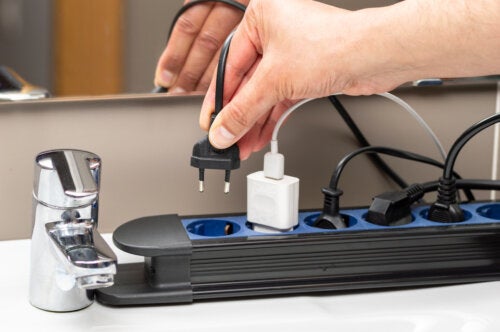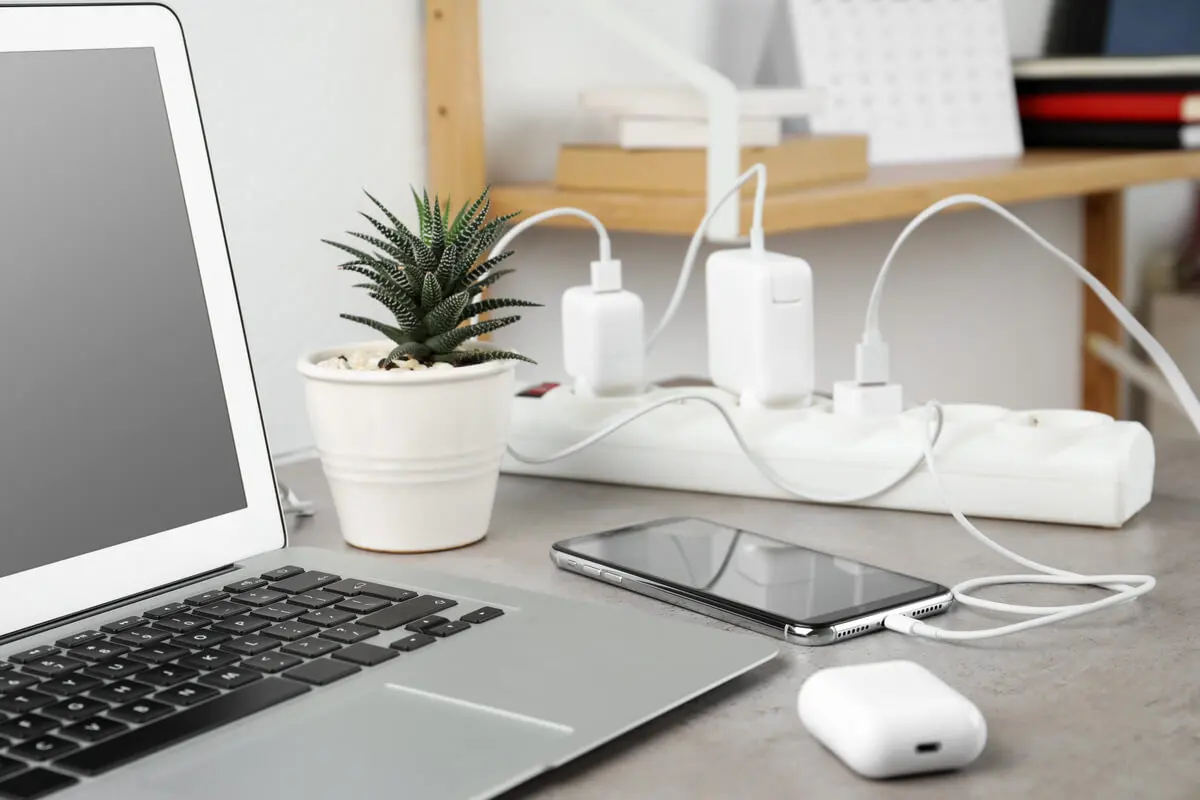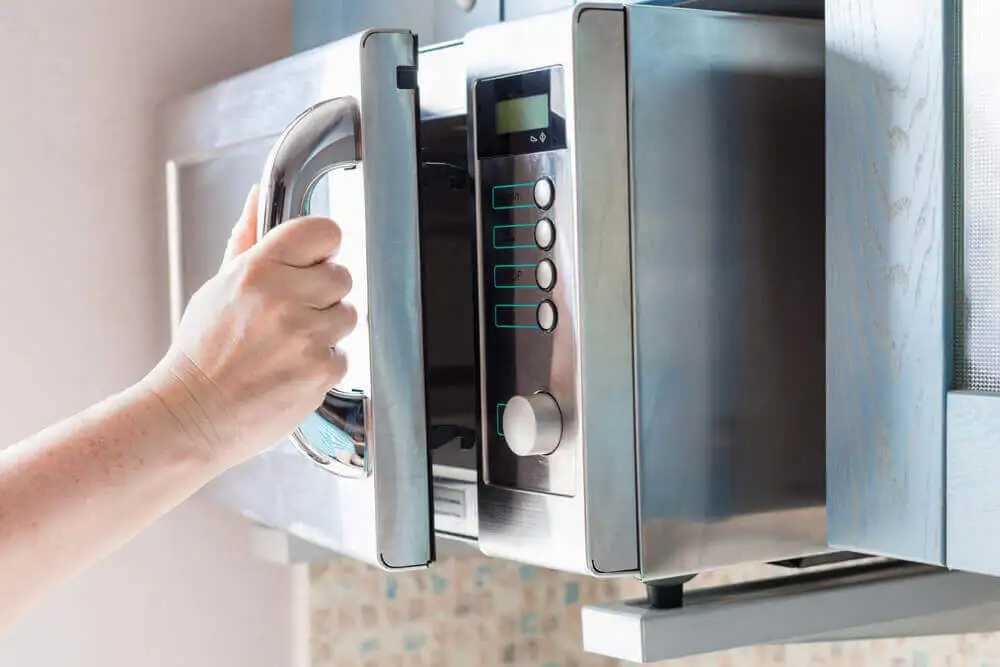6 Mistakes to Avoid When Using Energy Regulators


Reviewed and approved by the doctor Leonardo Biolatto
Most households use a large number of electrical outlets. There are more and more household appliances and work or entertainment devices that facilitate multiple daily tasks. For this reason, power regulators are functional to convert a single socket into 5 or 6 or even more.
However, there are a number of common mistakes in their use that it’s a good idea to know about in order to avoid accidents. On the other hand, there are power regulators that, in addition to extending the number of sockets, also work to reduce or increase the voltage and adjust it to each object.
This is a tool that should be used with caution. Overloading these elements, connecting them on top of each other, or applying them to appliances with high energy consumption are some of the mistakes that can cause failures.
What are power extenders and regulators?
Power regulators are tools that are connected to extend the number of outlets of an input. In this way, it’s possible to transform a single outlet into 6 or more. A function that is very useful in homes increasingly loaded with electrical appliances.
Energy demand is growing and it’s common to make risky mistakes by overloading devices.
In some places they are known as extenders, in others as extenders or regulators, and also as slippers or energy bars. However, with all of them, caution must be taken in their use, since electrical energy can be dangerous if used irresponsibly.
On the other hand, some extenders have voltage regulators, which serve to adapt the devices to the range they need to operate. However, most electrical items are already prepared for regional voltage levels, so they are only necessary on certain occasions.
Common mistakes when using power regulators
With the intention of increasing the number of outlets in the home, power regulators are often connected, sometimes irresponsibly. Keeping permanently connected appliances plugged in and also having spaces available for charging devices leads to certain mistakes in their use.
1. Overloading them
Perhaps the most common mistake in the use of these devices is the action of overloading them. Extenders have internal circuits that support a certain amount of energy.
If this is exceeded, there’s a risk of fire, damage to the devices or even melting of the plastic. It’s advisable to always leave 1 or 2 free spaces.
On the other hand, some extenders have switches that enable or cut off the current. If they are going to be used in appliances with high electrical consumption, it’s best to get this variety.

We think you may also enjoy reading this article: Aerothermal Energy: What Is It, How Does it Work, and What Are its Advantages?
2. Using damaged extenders
An outlet multiplier is likely to be partially damaged. For example, one of its blanks is burned out, but it has 4 or 5 others intact.
In that case,don’t use any of them. It should be discarded and another one obtained, as there may be damage to the internal circuits.
3. Not keeping them away from water and humidity
It’s clear that water and electricity should never be near each other. As obvious as it may seem, many household accidents result from this type of oversight.
Multiple extenders should never get wet or be near water. It’s also recommended that they be located as far away as possible from damp environments, such as bathrooms or basements.
4. Connecting one extender on top of another
Sometimes it’s necessary to extend the cables further to allow power to reach certain devices. Also, a power strip with 3 or 4 outlets may not be enough. Many people have the habit of plugging one extender into the space of another, thus increasing the number of outlets.
However, these tools are not designed for such use. Accumulating power regulators can cause power failures and even a fire due to electrical overload, so it’s possible to damage the connected devices. It’s important to always avoid this action.
5. Placing in enclosed spaces
Multiple extension cords should not be placed in enclosed spaces or under certain elements, such as carpets, due to the heat they generate. It’s also important to create a safe environment for them.
In particular, keep them away from footprints, children’s handling, or pets’ bites.
6. Use them outdoors
Energy regulators, in general, are designed for indoor use. They cannot withstand outdoor environmental conditions.
Rain, extreme heat, or excessive humidity can cause serious accidents. Some products include protection for outdoor use, but this should be made clear in the manufacturer’s manual.
Appliances that should never be connected to energy regulators
Some large household appliances require high power consumption. Therefore, it is not advisable to connect them to power extenders, as they can overload the tool:
- Coffee makers and toasters: Even though they’re small-sized appliances, they require high power consumption. However, as they are used occasionally, they can be connected and disconnected immediately, but always to an original outlet.
- Space heaters: Electric heaters have a high energy consumption and should be turned off once the space is already warm.
- Microwaves: Microwave technology requires high energy levels.
- Sump pumps: Being in places close to water and humidity, it’s important not to connect this object to energy regulators.
- Hair accessories: Hair dryers, curling irons, and hair straighteners require high amperage to generate heat.
- Freezers: In addition to consuming high amperage, refrigerators turn on and off constantly, depending on the internal temperature. This is not well supported by extenders.

Like this article? You may also like to read: 10 Tips to Take Care of the Environment at Home
To use or not to use voltage regulators?
In addition to power regulators or socket extenders, there are elements that control the amount of voltage that enters an appliance. But their use is not always necessary, since a good part of the electrical devices are prepared for voltage variations of 15%.
They are aspects to take into account if you acquire devices made in other countries or if you connect your own in other parts of the world during a trip. This is because each region has different voltage levels. For example, in Spain, for instance, it’s 220 volts, while in Mexico it’s 127.
However, some people choose to protect their expensive or frequently used power tools. They may already have their own internal regulators. However, in certain cases, voltage regulators are necessary.
Be responsible
Socket extenders are useful and necessary accessories for the home. However, one must take responsibility and avoid the mistakes described. Otherwise, serious accidents, such as fires or overloads, are possible. Remember to use electricity conscientiously.
All cited sources were thoroughly reviewed by our team to ensure their quality, reliability, currency, and validity. The bibliography of this article was considered reliable and of academic or scientific accuracy.
- Junior, Geraldo Motta Azevedo et al. “DESENVOLVIMENTO E IMPLEMENTAÇÃO DE FERRAMENTA PARA ECONOMIA DE ENERGIA ELÉTRICA: ESTUDO DE CASOS.” Projectus 4.3 (2021): 1–12. Disponible en: https://doi.org/10.15202/25254146.2019v4n3p1
- RODAS RENDÓN, DARIO E. , GALLEGO R., RAMÓN A. , FRANCO B., JOHN FREDY , LOCALIZACIÓN ÓPTIMA DE REGULADORES DE TENSIÓN EN SISTEMAS DE DISTRIBUCIÓN CON UN MODELAMIENTO TRIFÁSICO. Scientia Et Technica [Internet]. 2006;XII(32):109-114. Recuperado de: https://www.redalyc.org/articulo.oa?id=84911652020
- Amaya, Andrés F., Héctor I. Gómez, and Guillermo Espinosa. “Regulador de Voltaje -LDO- Completamente Integrado de Baja Caída de Tensión, Alta Velocidad y Bajo Consumo de Área.” INGENIERÍA Y COMPETITIVIDAD 17.1 (2015): 153–160. Disponible en: https://doi.org/10.25100/iyc.v17i1.2210
- Brown del Rivero, Alfonso, Electricidad, características y opciones de reforma para México. Análisis Económico [Internet]. 2011;XXVI(61):153-173. Recuperado de: https://www.redalyc.org/articulo.oa?id=41318401010
- Castro, Miguel, La seguridad eléctrica y los sistemas eléctricos. Ingeniería Energética [Internet]. 2010;XXXI(1):10-18. Recuperado de: https://www.redalyc.org/articulo.oa?id=329127743002
This text is provided for informational purposes only and does not replace consultation with a professional. If in doubt, consult your specialist.








